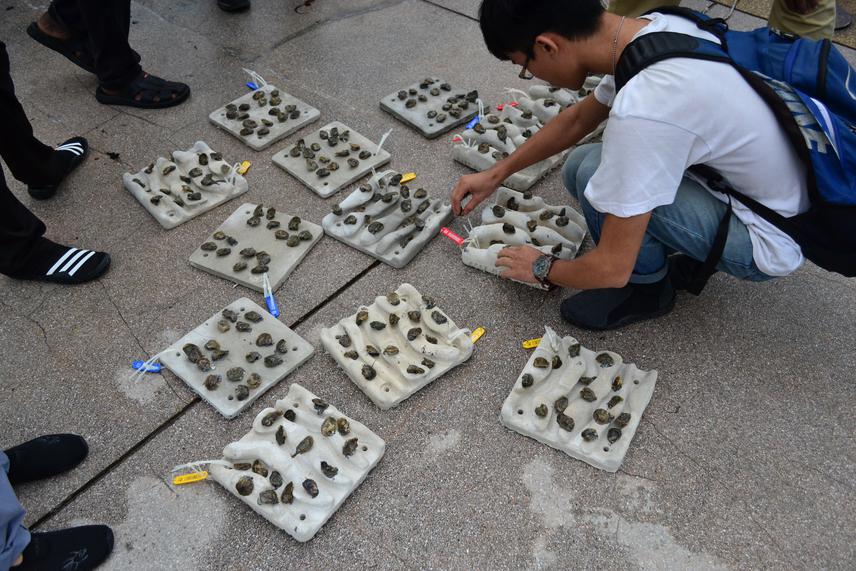Chee Su Yin
Other projects
26 Jul 2019
Lightweight Eco-Concrete with Reduced Carbon Footprint to Enhance the Ecological Value of Artificial Coastal Structures in Penang, Malaysia
Artificial structures (e.g. breakwaters, seawalls) in urban harbours can have widespread ecological consequences by enhancing the distribution and spread of non-indigenous species. Concrete and metal structures built in their stead are often inhospitable to recolonization by displaced species and sometimes serve as hotspots for non-indigenous species, further disrupting the ecology of the system. This project tests the effects of green engineering techniques in enhancing native bivalve communities and reducing non-indigenous species on artificial structures in harbours and ports. It aims to manipulate habitat enhancement (on tiles) and bivalve seeding to enhance native biodiversity and filtering rates and limit the spread of non-indigenous species.

The World Harbour Project-Penang Island is part of a global experiment initiated by Sydney Institute of Marine Science (SIMS). The goal of the World Harbour Project (WHP) is to develop resilient urban ports and harbours through a global network of collaborating scientists. The Project brings together research institutions and agencies concerned with the health of these heavily urbanised waterways and the increasing challenges they face.
Urbanised coastal environments such and harbours and ports are under increasing pressure from human activities such as shipping, fisheries, tourism, and residential and industrial development. These activities are linked to threats such as heavy metal and organic pollution, loss of natural habitats, sedimentation, and overfishing. The potential environmental impacts from these threats include loss of biodiversity and a reduction in ecosystem functioning. Harbours in Penang Island are usually faced with a combination of these problems and the resultant ecological, social and economic impacts. Seawalls at harbours and ports support impoverished bivalve communities because their flat, vertical surfaces compress the intertidal zone and limit the 3-dimensional spaces (e.g. crevices, ledges, pits) for colonization and growth of flora and fauna. They are often colonised by invasive species that can alter the biodiversity and ecosystem function. Adding native bivalves to these structures via seeding or transplants could enhance their biodiversity and functioning, and minimize the colonization of non-native species. Adding 3-dimensinal horizontal spaces seeded with bivalves to artificial habitats could result in increased community biodiversity and functioning relative to flat and unseeded artificial habitats in Penang.
In this experiment, habitat enhancements (settlement tiles with different treatments) will be installed onto breakwaters in Straits Quay Marina and Penang Port. Some of these of these tiles will be seeded with oyster spats of the species, Crassostrea iredalei—a native bivalve species. We hypothesize that adding complex habitat, that enhances the number of microhabitats available on seawalls, will enhance native biodiversity over that found on flat tiles and tiles seeded with bivalves (due to microhabitats they provide) will support fewer non-native species. A total of 15 variables, including survival of seeded bivalves, identity and count of mobile and sessile fauna, biofilm assemblage, weather, inundation period, flow, and water quality parameters, will be recorded periodically for a period of one year.